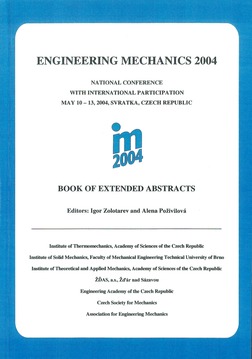Proceedings Vol. 10 (2004)

ENGINEERING MECHANICS 2004
May 10 – 13, 2004, Svratka, Czech Republic
Copyright © 2004 Institute of Thermomechanics, Academy of Sciences of the Czech Republic, Prague
ISSN 1805-8248 (printed)
ISSN 1805-8256 (electronic)
list of papers scientific commitee
pages 335 - +10p., full text
A vapour cavitation in hydrodynamical bearings is a significant factor that influences dynamical properties of the total rotor system. Its substanace consists in boiling the oil if the pressure in the bearing gap drops below a critical value. It always arrives at formation of a two-phase medium and at rupture of the oil film. Incorporation of a vapour cavitation into the computational models of fluid film bearings assumes that two kinds of areas exist in the bearing clearance. In noncavitated regions a hydrodynamical effect is developed and then the pressure distribution is governed by a Reynolds equation. In cavitated areas the pressure remains constant. To be kept the continuity of flow between these regions the pressure gradient on both sides of their common border must be zero. If geometry and design parameters of the bearing with a deep central groove make possible to consider it as short, then solution of the Reynolds equation ( including the case of bearings of non-circular cross section ) can be expressed in a closed form. If the pressure magnitude should drop below a critical value a cavitation takes place. Solution of the Reynolds equation is then divided into two parts between which an interval of constant pressure exists. Components of the hydraulical force are calculated by integration of the pressure distribution along the lenght and circumference of the bearing. For solution of the equation of motion a modified Newmark method has been adopted. Applicability of the developed approach has been tested by means of computer simulations.
back to list of papers
Text and facts may be copied and used freely, but credit should be given to these Proceedings.
All papers were reviewed by members of the scientific committee.

 Powered by
Imce 3.20 © 2023, Pavel Formánek, Institute of Thermomechanics AS CR, v.v.i. [generated: 0.0120s]
Powered by
Imce 3.20 © 2023, Pavel Formánek, Institute of Thermomechanics AS CR, v.v.i. [generated: 0.0120s]